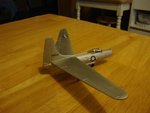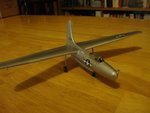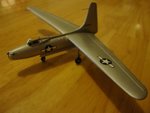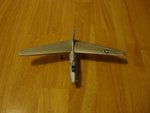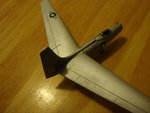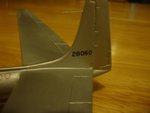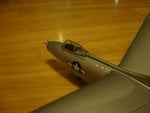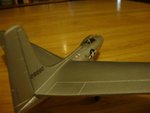otftch
Staff Sergeant
This is a Cornelius XFG-1 expendable fuel transport glider. It would have been used for airborne transportation of fuel and towed behind bombers or long range fighters and cut loose when the fuel was exhuisted. Two prototypes were manufactured, with one crashing during tests. This effectively killed the project. Cornelius Aircraft corpoation went on to produce a couple more foward swept wing aircraft for the civil market.The kit is an old Airmodel vac-u-form to 1/72 scale. This guy was just to neat not to include in my collection.
Ed
Ed

